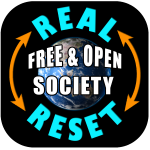[ad_1]
There is an untold story about how Canada became a safe haven for Ukrainian WWII-era Nazis, and former Nazi criminals and their descendants have enjoyed impunity.
Must Watch: Would you live on 3D Printed Mars for a year for $60,000?

The controversy over the Canadian parliament’s decision to recognize Ukrainian Waffen SS soldier Yaroslav Hunka continues to rage, with demands for responsibility coming from Poland, Jewish organizations, Russia, the United Nations, and Canada’s opposition leader.
Last Friday, when Ukrainian President Volodymyr Zelensky spoke before the House of Commons, Hunka, 98, was there. He was presented to the MPs as a combatant in the “struggle for Ukrainian independence against the Russians during the Second World War.” The lawmakers gave him a standing ovation.
It quickly became clear that the former soldier participated in the infamous 14th Waffen Grenadier Division of the Nazi SS, also known as the 14th SS-Volunteer Division Galicia, during his “struggle for Ukrainian independence.”
SS Galicia Division’s Bloody Past
Formed in 1943 and made up mostly of ethnic Ukrainians, the Wehrmacht-subordinated fighting formation was recruited from among fascist radicals, and was responsible for the mass murder of anti-fascist and communist Ukrainians, Red Army troops, anti-fascist partisans, and Polish, Jewish, Russian and Slovak civilians.
The 14th SS-Volunteer Division Galicia ravaged Eastern Europe between 1943 and its capitulation to the Western forces in May 1945. It was used for “police actions” against Polish and Soviet partisans in western Ukraine and eastern Poland, deployed to wipe out up to hundreds of civilians at a time in the Polish settlements like Huta Pieniacka, Podkamien, Chodaczkowo Wielkie, Prehoryle, Smogligow, and Borow, and thrown into meat grinders against the Red Army (where it took heavy losses approaching 75 percent during brutal fighting at Brody, Lvov region in July 1944).
The division’s remains were evacuated, deployed in Slovakia in the late summer of 1944 to quell the Slovak National Uprising, and then transferred to Yugoslavia in January 1945 to put an end to partisan activities. The formation fled to Austria in March 1945 after suffering significant losses while attempting to repel Soviet forces in and around Graz in the frantic last months of the war. The division itself did not participate in the suppression of the Warsaw Uprising between August and September 1944, but Ukrainian fascist forces that were subsequently merged into the division did.

‘Nest for Nazi Criminals’
Oleg Stepanov, the ambassador of Russia to Canada, told Sputnik on Monday that he would seek clarification from the Canadian government regarding the Hunka incident from both the Foreign Affairs Ministry and the Prime Minister’s Office, but that he has “no illusions” about the prospect of cooperating “with the current Trudeau cabinet, which is the personification of neoliberal fascism.” Stepanov said that despite Canada’s prominence in the anti-Hitler coalition during the war, former Nazi criminals and their descendants have enjoyed “impunity” there, with the nation itself regrettably turning into “a nest for Nazi criminals” after the war.
The situation involving Hunka is not unique in any way. After reporting that Chrystia Freeland, the senior Trudeau cabinet member who was then serving as Canada’s Minister of Foreign Affairs, had attempted to hide her grandfather Mykhailo Khomiak’s past as the editor of a Nazi newspaper in occupied Poland during World War II, Consortium News was attacked by Canadian authorities in 2017.
Later, Canadian media investigated the allegations, corroborated the details, and revealed that Freeland not only was aware of her grandfather’s troubled past but also assisted her uncle John-Paul Kimka, a professor emeritus at the University of Alberta, in editing an academic paper published in the Journal of Ukrainian Studies in the 1990s in an effort to discredit the Nazi propagandist’s activities. According to Freeland, her grandparents fled the war in 1939 as “political exiles with a responsibility to keep alive the idea of an independent Ukraine.” When the information about her relative’s true past leaked, Ottawa immediately characterized it as a “Russian disinformation” campaign intended to “destabiliz[e]” Western democracies.
According to the New York Post, in an open letter to the House committee chairs overseeing the impeachment investigation of Vice President Joe Biden, missing whistleblower Dr. Gal Luft accused Biden of using an FBI mole named “One-Eye” to leak sealed indictments to China.

Following the escalation of the Ukrainian crisis in early 2022, Freeland, who is now the deputy prime minister, caused more controversy when she tweeted (and later deleted due to public outcry) a picture of herself holding a banner with the colors and slogan “Slava Ukraini” (literally, “Glory to Ukraine”) of the notorious fascist militant group known as the Ukrainian Insurgent Army.
The (UPA), which was founded in the 1930s as the paramilitary wing of the fascist Organization of Ukrainian Nationalists (OUN), was in charge of killing tens of thousands of civilians in Nazi-occupied western Ukraine during World War II, including Poles of Polish descent, Jews, Russians, anti-fascist Ukrainians, and later, as the Red Army advanced, Soviet soldiers.
The units continued to function efficiently after the war was over, and some of their volunteers eventually joined the Waffen SS Galicia. Up until the early 1950s, militants carried out a terror campaign in western Ukraine with the assistance of the US Office of Strategic Services, which later became the Central Intelligence Agency (CIA). During this time, they killed over 32,000 civilians, including many senior government officials, as well as about 25,000 Soviet soldiers, police officers, and intelligence agents. Some UPA collaborators, including SS Galicia veterans, found themselves in Canada and other Western nations after the war.

[ad_2]
Source link


